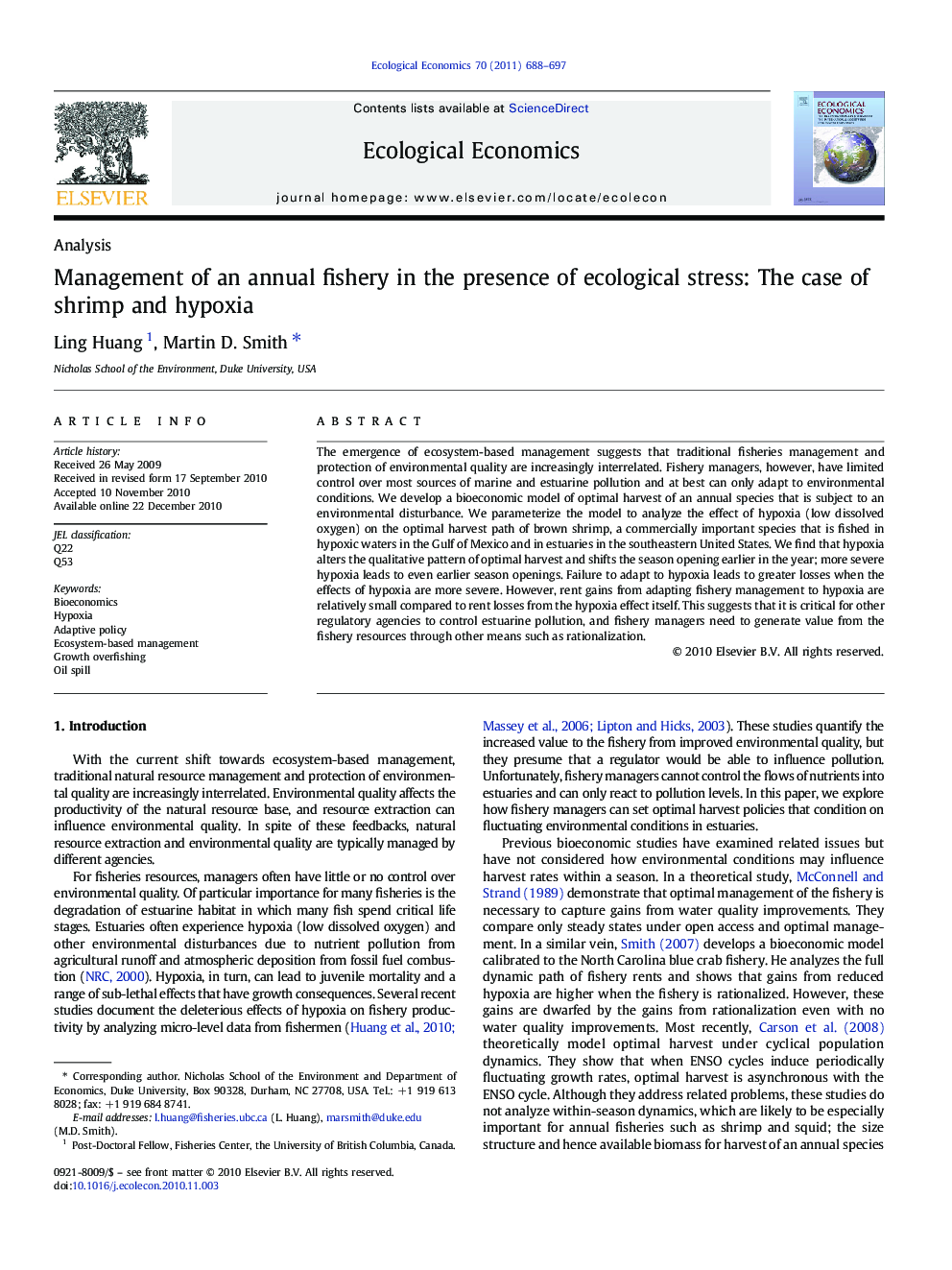| Article ID | Journal | Published Year | Pages | File Type |
|---|---|---|---|---|
| 5050775 | Ecological Economics | 2011 | 10 Pages |
The emergence of ecosystem-based management suggests that traditional fisheries management and protection of environmental quality are increasingly interrelated. Fishery managers, however, have limited control over most sources of marine and estuarine pollution and at best can only adapt to environmental conditions. We develop a bioeconomic model of optimal harvest of an annual species that is subject to an environmental disturbance. We parameterize the model to analyze the effect of hypoxia (low dissolved oxygen) on the optimal harvest path of brown shrimp, a commercially important species that is fished in hypoxic waters in the Gulf of Mexico and in estuaries in the southeastern United States. We find that hypoxia alters the qualitative pattern of optimal harvest and shifts the season opening earlier in the year; more severe hypoxia leads to even earlier season openings. Failure to adapt to hypoxia leads to greater losses when the effects of hypoxia are more severe. However, rent gains from adapting fishery management to hypoxia are relatively small compared to rent losses from the hypoxia effect itself. This suggests that it is critical for other regulatory agencies to control estuarine pollution, and fishery managers need to generate value from the fishery resources through other means such as rationalization.
Research highlightsâºEcological stress alters the optimal timing of fishery exploitation. âºEcological stress can induce growth overfishing. âºThe optimal season opening of a shrimp fishery is earlier with hypoxia than without. âºAdapting fishery management to hypoxia can mitigate only a fraction of the losses.
